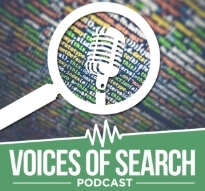Content optimization with Knowledge Graphs — Beatrice Gamba // WordLift — Beatrice Gamba // WordLift
- Part 1Knowledge Graph SEO — Beatrice Gamba // WordLift — Beatrice Gamba // WordLift — Beatrice Gamba // WordLift
- Part 2 Content optimization with Knowledge Graphs — Beatrice Gamba // WordLift — Beatrice Gamba // WordLift
Show Notes
-
02:11Content optimization and its effect on knowledge graphsThe main goal of a knowledge graph is to organize content. Optimizing content and adding structured data provides Google with what it needs to have a good context for a piece of content.
-
04:36Submitting structured vs unstructured information when optimizing for Google resultsThe approach must be based on the goals of the business. But, it generally starts with unstructured data then you move on to using schema to guide Google on how to link content together.
-
06:44Building semantic associations using schema vs internal link buildingBuilding semantic associations between pages gives context to the links. Unlike internal linking, the link is emphasized and indicates to search engines, with metadata, why concepts are linked.
-
08:03Building associations that you want within Google during the content production processWhile going through content production, you should understand what entities youre going to talk about. Semantic briefs can be used when there is no structured data to determine the topics to be covered and linked semantically.
Quotes
-
"Everything about knowledge graphs is about content organization. In fact, the primary scope of knowledge graphs is about organizing content." -Beatrice Gamba, Senior SEO Strategist, WordLift
-
"By building semantic associations using schema, you can give context to the links. Youre telling Google, with metadata, what is the link and why those two concepts are linked." -Beatrice Gamba, Senior SEO Strategist, WordLift
-
"In time, feeding information towards your knowledge panel will eventually result in the right knowledge panel being shown for yourself." -Beatrice Gamba, Senior SEO Strategist, WordLift
-
"If you create a knowledge graph for your website or for your blog, then you are creating a vocabulary for your website and you are also curating your personal branding." -Beatrice Gamba, Senior SEO Strategist, WordLift
- Part 1Knowledge Graph SEO — Beatrice Gamba // WordLift — Beatrice Gamba // WordLift — Beatrice Gamba // WordLift
- Part 2 Content optimization with Knowledge Graphs — Beatrice Gamba // WordLift — Beatrice Gamba // WordLift
Up Next:
-
Part 1Knowledge Graph SEO — Beatrice Gamba // WordLift — Beatrice Gamba // WordLift — Beatrice Gamba // WordLift
Beatrice Gamba, Senior SEO Strategist at WordLift, discusses the Knowledge Graph. The Knowledge Graph is a powerful tool for search engine optimization and can help you improve the relevance of your content by adding more meaning to it. In fact, it’s so powerful that simply submitting a Knowledge Graph can be considered an SEO strategy. Today, Beatrice talks about Knowledge Graph SEO.
Play Podcast -
Part 2Content optimization with Knowledge Graphs — Beatrice Gamba // WordLift — Beatrice Gamba // WordLift
Beatrice Gamba, Senior SEO Strategist at WordLift, discusses the knowledge graph. The knowledge graph is Google’s semantic database of the world, cataloging millions of entities, their relationships, and general facts about them. This means that it’s a perfect match for content optimization, the process of writing content that conveys your business goals while fulfilling user intent. Today, Beatrice talks about content optimization with knowledge graphs.









